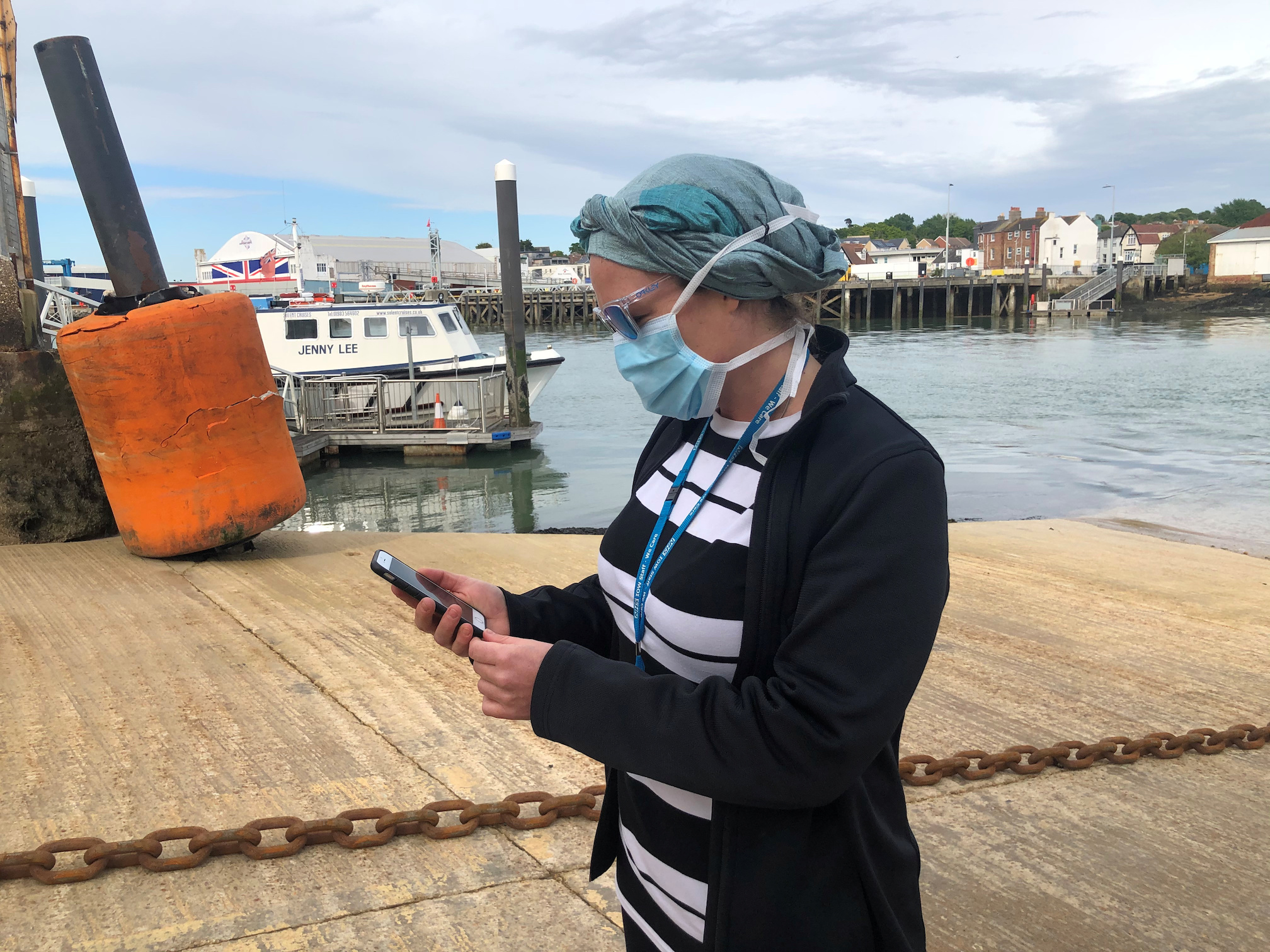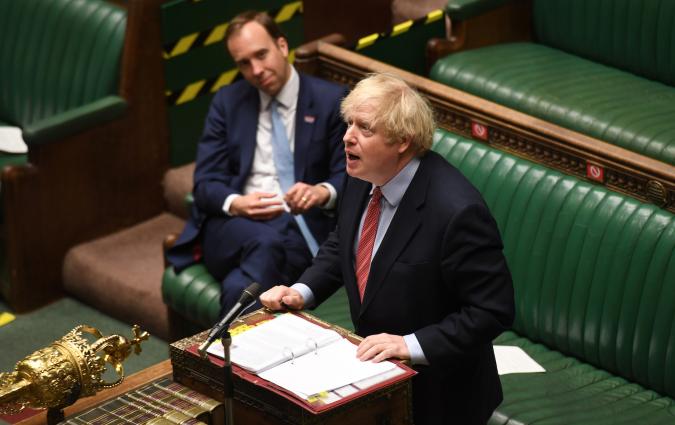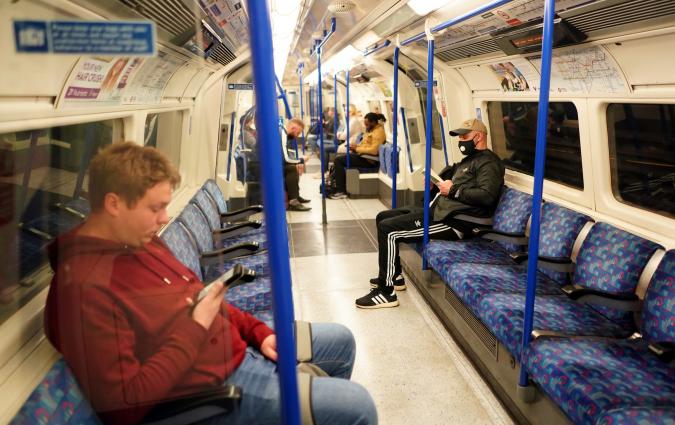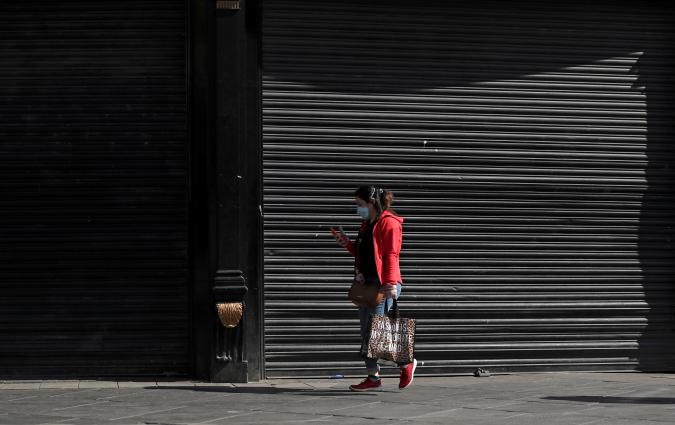This is the fifth factsheet of the UK COVID-19 news and information project.
DOI: 10.60625/risj-yb7w-2g47
Key findings
In this RISJ Factsheet we examine associations between people’s news use and trust in government information, and their self-reported willingness to take a number of preventive measures to combat the coronavirus pandemic in the UK based on a survey fielded from 4 to 10 June 2020.
We find that:
- A large share of the UK population, across demographic differences, political differences, and differences in news use and trust in government, say they would be willing to take preventive measures, including self-isolate following test and trace (86%), take an antibody test (82%), a coronavirus test (80%), and a coronavirus vaccine if/when offered (78%). People also say they would wear masks in public spaces if advised by the government (76%), but less than half (46%) say they would be willing to download and use a coronavirus contact tracing app.
- Even among people who say they are not relying on news organisations for news and information about coronavirus, a majority say they would take five of the six preventative measures we have data on. We find still higher willingness to adopt preventive measures among those who are more frequent news users.
- Similarly, even among people who say they do not trust the UK government as a source of information about COVID-19, large majorities say they would take five of the six preventative measures we have data on. We find still higher willingness to adopt preventive measures among those who say they trust the government.
- News use and trust in government are not the only factors that will influence people’s willingness to take preventative measures, socio-demographic factors will matter too. Looking at age (which is associated with risk), we find that a majority of people of all ages say they are willing to take most preventative measures. Older people report still higher willingness to adopt preventive measures.
- Finally, 24% of our respondents think that the coronavirus situation in the UK is heading in the right direction (down from 39% in mid-April), 29% of respondents thought that the coronavirus situation in the UK was on the wrong track (up from 10% in April). Many people (41%) still see a mixed picture.
Overview
This is the fifth in a series of ten factsheets based on an ongoing online panel survey of a representative sample of the UK population. The survey was designed by the Reuters Institute for the Study of Journalism at the University of Oxford to collect data on how people navigate news and information during the coronavirus pandemic and was fielded by YouGov. Ten waves will be fielded at two-week intervals, top-line findings from each will be published soon after in a factsheet, with more in-depth analysis to follow. More details about the project and the methodology can be found on the project website. The survey is a mix of tracking questions and specific questions fielded only in some waves.
Findings
In this factsheet, we examine how people’s self-reported willingness to take preventive measures to limit the spread of coronavirus is linked with news use and with trust in government. This builds on previous research demonstrating that an initial surge in news use around the crisis has been followed by growing news avoidance (Kalogeropoulos et al. 2020) as well as research documenting a sharp decline of trust in the UK government (Fletcher et al. 2020) and a growing number of people who are confused by official communications or even fear it is false or misleading (Cushion et al. 2020, Fletcher et al. 2020).
There is a risk that growing news avoidance, declining trust in government, and fears among some that they cannot count on official communications might undermine people’s willingness to take preventive measures that could help limit the spread of COVID-19. People who pay little attention to news and are distrustful of government and other authorities could potentially be less willing to follow public health recommendations.
To better understand this risk, we have included survey questions focused on six possible preventive measures that all rely on public compliance: (i) to take a coronavirus test (if offered), (ii) an antibody test (if offered), (iii) willingness to take a vaccine (when/if one is available), (iv) to use a contact tracing mobile app, (v) to wear a facemask in public spaces (if advised to by the government), and (vi) to self-isolate if advised to by the test and trace service. When asked whether they would do any of these, respondents could select from ‘definitely not’, ‘probably not’, ‘maybe’, ‘probably would’, ‘definitely would’, and ‘don’t know’. The percentages we show in Figures 2 to 4 below show those that selected ‘probably would’ and ‘definitely would’ combined.1
It is important to be clear that the survey data we have is (a) self-reported data, and (b) for many respondents these are hypothetical questions. While this data is useful, it also has clear limitations, and it does not necessarily reflect what people are doing in practice, or will do in practice. Like many survey questions, questions about people’s self-reported willingness to take preventive measures in a public health crisis are susceptible to what researchers call ‘social desirability bias’, where people often tend to answer in a manner they think will be viewed favourably by others, or in ways that confirm their own idealised identity and sense of self (see eg Brenner and DeLamater 2017). Because several of the questions about willingness to take preventive measures are hypothetical, for example because there are no vaccines at the moment, responses are also susceptible to belief vs behaviour biases, as hypothetical questions can yield quite different answers from personalised questions that ask about actual behaviours (see eg Choi and Pak, 2004). Because we are dealing with a situation where many of us will understandably want to appear, and see ourselves as being, pro-social, and where we are trying to understand whether people might do things that they often cannot actually do at this point in time, we have tried to minimise the problems of social desirability/identity bias and belief vs behaviour bias through careful question wording. But let us stress again, that our data captures only what people say they will do, not what they are in fact doing or will in fact do.
So what do people say?
A large share of the UK population say they would be willing to take most preventive measures. More than three-quarters ‘probably would’ or ‘definitely would’ self-isolate if advised by the test and trace service (86%), or take an antibody test (82%), a coronavirus test (80%), and a coronavirus vaccine if/when one is available (78%), and would wear masks in public spaces if advised by the government (76%) (Figure 1). (Illustrating the methodological issues briefly outlined above, please note that other polling by YouGov from late May/early June suggests that, despite government advice to wear facemasks in enclosed public spaces where social distancing is not possible, only 21% in the UK say they are wearing facemasks in public (a personalised question).2 We ask them if they would wear a facemask (a hypothetical question).) Furthermore, between 8 and 16% of respondents say they would ‘maybe’ take these measures, leaving only a very small proportion that say they probably or definitely would not.
Less than half (46%) of our respondents say they would be willing to download and use a contact tracing app. This share is below the 60% adoption rate that could help stop the epidemic according to some expert models3, though lower levels of app use could still help. One reason for the lower numbers may be that some people do not own a smartphone, or are not confident in their ability to download and use the app. But criticism of the government’s approach and concerns over data protection and privacy may also influence some.
Figure 1. Proportion that definitely or probably would ____
PREVENT. Would you do each of the following or not? Showing results for ‘Probably would’ and ‘Definitely would’. Base: Total Sample = 1645.
How is people’s self-reported willingness to adopt preventive measures then linked to news use and trust in government information about COVID-19?
Looking at news use first, all the different preventive measures we consider have been covered extensively in the news, and we find that self-reported willingness to adopt each of them is positively associated with how frequently people access COVID-19 news and information from news organisations.4 However, even among the low news use groups, more than half say they would probably or definitely be willing to take most of the preventive measures.
We divided our respondents into three categories: those that reported using no COVID-19 news in the last week (13% of the sample), those that accessed it less than once a day on average (20%), and those that accessed it at least once a day on average (67%).
Those that accessed COVID-19 news at least once a day on average (which is most people) are typically more willing to say they would definitely or probably adopt each preventive measure than those that use it less than once a day or not at all. This could be because they are better informed about the potential benefits, or it could be because the people who use news more share something else in common with people who are more willing to adopt preventive measures.5
The partial exception is willingness to download and install a contact tracing app, which differs less by news use frequency, and even among daily news users less than 50% say they would ‘probably’ or ‘definitely’ be willing to use it.
Figure 2. Proportion that definitely or probably would ____ by frequency of COVID-19 news use in last 7 days
PREVENT. Would you do each of the following or not? Showing results for ‘Probably would’ and ‘Definitely would’. Q4a. On how many of the last 7 days have you used the following as a source of news and information about Coronavirus (COVID-19)? COVID-19 news once a day or more/COVID-19 news less than once a day/No COVID-19 news in the last week = 1061/319/213.
Looking at trust in government next, we see that those that trust the government as a source of news and information about COVID-19 are, in most cases, slightly more willing to adopt preventive measures than those that do not trust the government, or neither trust nor distrust them. But again, in most cases, the differences are quite small, and most people are willing to adopt most of the measures. Again, downloading and using a contact tracing app is the exception, because the gap between those that trust the government as a source of news and information about COVID-19 (61%) and those that do not trust the government (33%) is larger.
Figure 3. Proportion that definitely or probably would ____ by trust in the UK government as a source of news and information about COVID-19
PREVENT. Would you do the each of the following or not? Showing results for ‘Probably would’ and ‘Definitely would’. Q10. How trustworthy would you say news and information about coronavirus (COVID-19) from the following is? Please use the scale below, where 0 is 'not at all trustworthy' and 10 is 'completely trustworthy'. Base: Trusts/Neither trusts nor distrusts/Does not trust = 715/241/660. Note: Trusts = 6-10, Neither = 5, Does not trust = 0-4.
News use and trust in government are of course not the only factors that might influence whether people are willing to take preventive measures.
We have looked specifically at differences by age (which is associated with a greater risk of becoming seriously ill from COVID-19), and find differences in willingness to take preventive measures (see Figure 4). Again, the differences are small, and the majority of people of all ages say they are willing to take tests, vaccines, self-isolate, and wear masks. As age (and health risk associated with COVID-19) increases, the willingness to adopt preventive measures tends to increase too.
The largest differences were seen for willingness to wear a mask. There was a 19 percentage point gap between the proportion of 18-24s who ‘definitely would’ or ‘probably would’ wear a facemask in public if advised by the government, and the over 65s (88%).
Figure 4. Proportion that definitely or probably would ____ by age group
PREVENT. Would you do the each of the following or not? Showing results for ‘Probably would’ and ‘Definitely would’. Base: 18-24/25-34/35-44/45-54/55-64/65+ = 110/259/249/243/306/478.
Overall, we find that even though a sizable minority of people in the UK seek out little, or even no, news from news organisations, and a large number of people have low trust in government information, most people say they are willing to take most of the preventive measures we have data on. Clearly, people can be sceptical, even highly critical, citizens and be prepared to take steps recommended by health authorities to protect themselves, their families, and their communities at the same time.
Finally, our survey was in the field from 4 to 10 June, a period in which confirmed hospital deaths from COVID-19 in the UK grew from 39,728 to 40,883 (Roser et al. 2020), and where there was considerable news coverage of the ‘Black Lives Matter’ protests in the US, the UK and around the world. One of the coronavirus stories that got considerable attention is the implementation of a 14-day quarantine for those who enter the UK from June 8.
Overall, 29% of respondents thought that the coronavirus situation in the UK was on the ‘wrong track’, up from 10% in April. This figure is now higher than for those that think the situation is heading in the right direction (24%, down from 39% in April). Many people (41%) still see a mixed picture (See Figure 5).
Figure 5. Proportion that think the coronavirus situation in the UK is generally heading in the right direction
Q19. All in all, do you think the Coronavirus situation in the UK is generally headed in the right direction, or do you feel things are off on the wrong track? Base: Total sample: 1,645.
Footnotes
1 Our question wordings for willingness to adopt preventive measures are adapted from Freeman et al. (2020).
2 https://yougov.co.uk/topics/health/articles-reports/2020/06/04/covid-19-britons-still-wont-wear-face-masks
3 https://www.research.ox.ac.uk/Article/2020-04-16-digital-contact-tracing-can-slow-or-even-stop-coronavirus-transmission-and-ease-us-out-of-lockdown
4 We asked people on how many of the last 7 days have you accessed COVID-19 news and information from television news bulletins, 24-hour television news, radio, printed newspapers, printed magazines, newspaper websites, magazine websites, broadcaster websites, and websites of other news outlets.
5 To partially control for the influence of other variables, we built a linear regression model. The model controlled for age, gender, education, left-right political leaning, trust in the government as a source of news and information about COVID-19, perceived threat of COVID-19, and news avoidance. The coefficient for frequency of COIVD-19 news use was significant at the .05 level for willingness to adopt every preventive measure.
References
- Brenner, P. S., DeLamater, J. 2016. ‘Lies, Damned Lies, and Survey Self-Reports? Identity as a Cause of Measurement Bias.’ Social Psychology Quarterly 79 (4): 333–54. https://doi.org/10.1177/0190272516628298
- Choi, B. C. K., Pak, A. W. P. 2004. ‘A Catalog of Biases in Questionnaires.’ Preventing Chronic Disease 2 (1). https://www.ncbi.nlm.nih.gov/pmc/articles/PMC1323316/
- Cushion, S., Kyriakidou, M., Morani, M., Soo, N. 2020. ‘Coronavirus: Fake News Less of a Problem Than Confusing Government Messages.’ The Conversation. https://theconversation.com/coronavirus-fake-news-less-of-a-problem-than-confusing-government-messages-new-study-140383
- Fletcher, R., Kalogeropoulos, A., Nielsen, R. K. 2020. Trust in UK Government and News Media COVID-19 Information Down, Concerns over Misinformation from Government and Politicians Up. Oxford: Reuters Institute for the Study of Journalism.
- Freeman, D. et al. 2020. Coronavirus Conspiracy Beliefs, Mistrust, and Compliance with Government Guidelines in England. Psychological Medicine 1–13.
- Kalogeropoulos, A., Fletcher, R., Nielsen, R. K. 2020. Initial Surge in News Use Around Coronavirus in the UK Has Been Followed By Significant Increase In News Avoidance. Oxford: Reuters Institute for the Study of Journalism.
- Roser, M., Ritchie, H., Ortiz-Ospina, E., Hasell, J. 2020. ‘Coronavirus Disease (COVID-19)’. Our World in Data. https://ourworldindata.org/coronavirus
About the Authors
Antonis Kalogeropoulos is a Lecturer in Communication and Media at the University of Liverpool and a Research Associate of the Reuters Institute for the Study of Journalism.
Richard Fletcher is a Senior Research Fellow at the Reuters Institute for the Study of Journalism and leads the Institute’s research team.
Rasmus Kleis Nielsen is the Director of the Reuters Institute for the Study of Journalism and Professor of Political Communication at the University of Oxford.
Funding acknowledgements
Factsheet published by the Reuters Institute for the Study of Journalism as part of the UK COVID-19 News and Information project funded by the Nuffield Foundation. The Nuffield Foundation is an independent charitable trust with a mission to advance social well-being. It funds research that informs social policy, primarily in Education, Welfare, and Justice. It also funds student programmes that provide opportunities for young people to develop skills in quantitative and scientific methods. The Nuffield Foundation is the founder and co-funder of the Nuffield Council on Bioethics and the Ada Lovelace Institute. The Foundation has funded this project, but the views expressed are those of the authors and not necessarily the Foundation. Visit www.nuffieldfoundation.org.

Published by the Reuters Institute for the Study of Journalism.

This report can be reproduced under the Creative Commons licence CC BY. For more information please go to this link.








